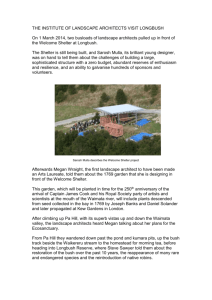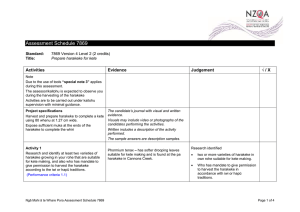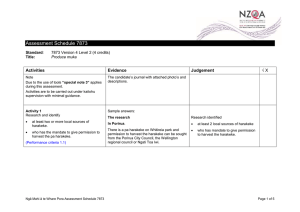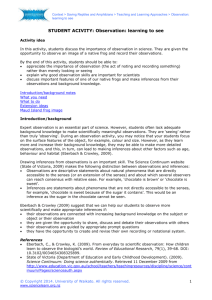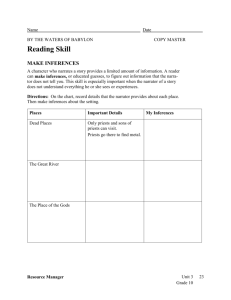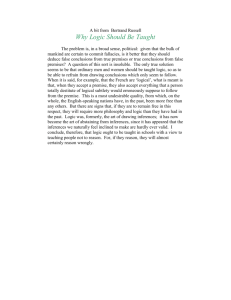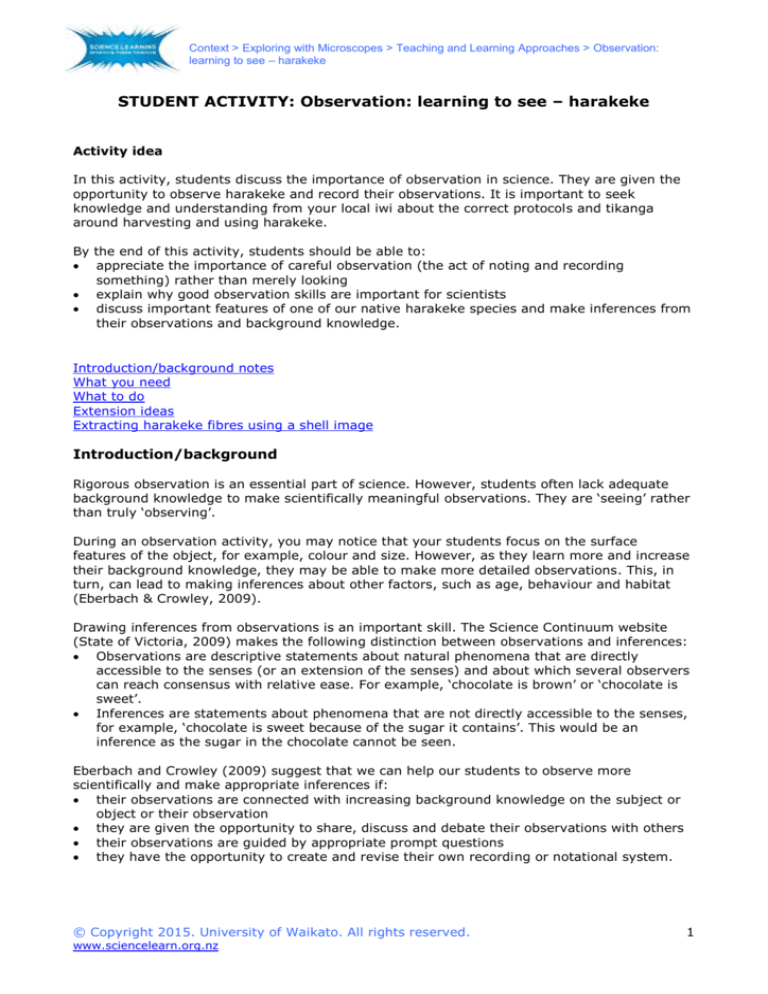
Context > Exploring with Microscopes > Teaching and Learning Approaches > Observation:
learning to see – harakeke
STUDENT ACTIVITY: Observation: learning to see – harakeke
Activity idea
In this activity, students discuss the importance of observation in science. They are given the
opportunity to observe harakeke and record their observations. It is important to seek
knowledge and understanding from your local iwi about the correct protocols and tikanga
around harvesting and using harakeke.
By the end of this activity, students should be able to:
appreciate the importance of careful observation (the act of noting and recording
something) rather than merely looking
explain why good observation skills are important for scientists
discuss important features of one of our native harakeke species and make inferences from
their observations and background knowledge.
Introduction/background notes
What you need
What to do
Extension ideas
Extracting harakeke fibres using a shell image
Introduction/background
Rigorous observation is an essential part of science. However, students often lack adequate
background knowledge to make scientifically meaningful observations. They are ‘seeing’ rather
than truly ‘observing’.
During an observation activity, you may notice that your students focus on the surface
features of the object, for example, colour and size. However, as they learn more and increase
their background knowledge, they may be able to make more detailed observations. This, in
turn, can lead to making inferences about other factors, such as age, behaviour and habitat
(Eberbach & Crowley, 2009).
Drawing inferences from observations is an important skill. The Science Continuum website
(State of Victoria, 2009) makes the following distinction between observations and inferences:
Observations are descriptive statements about natural phenomena that are directly
accessible to the senses (or an extension of the senses) and about which several observers
can reach consensus with relative ease. For example, ‘chocolate is brown’ or ‘chocolate is
sweet’.
Inferences are statements about phenomena that are not directly accessible to the senses,
for example, ‘chocolate is sweet because of the sugar it contains’. This would be an
inference as the sugar in the chocolate cannot be seen.
Eberbach and Crowley (2009) suggest that we can help our students to observe more
scientifically and make appropriate inferences if:
their observations are connected with increasing background knowledge on the subject or
object or their observation
they are given the opportunity to share, discuss and debate their observations with others
their observations are guided by appropriate prompt questions
they have the opportunity to create and revise their own recording or notational system.
© Copyright 2015. University of Waikato. All rights reserved.
www.sciencelearn.org.nz
1
Context > Exploring with Microscopes > Teaching and Learning Approaches > Observation:
learning to see – harakeke
References
Eberbach, C., & Crowley, K. (2009). From everyday to scientific observation: How children
learn to observe the biologist’s world. Review of Educational Research, 79(1), 39–68. DOI:
10.3102/0034654308325899.
State of Victoria (Department of Education and Early Childhood Development). (2009).
Science Continuum: Doing science authentically. Retrieved 11 December 2009 from
www.education.vic.gov.au/school/teachers/teachingresources/discipline/science/continuum
/Pages/scienceauth.aspx
What you need
A selection of harakeke leaves
Pens/pencils and paper
Magnifying glasses
What to do
1. Give students a selection of harakeke leaves to observe. Ask them to carefully observe the
leaves and make a list of their observations. Have the students feed back to the class and
make a list on the board.
2. Watch the video clip Observation in science.
What senses help to make good observations?
Why do you think observation is an important skill for scientists?
What other methods do scientists use to collect information about plants?
What is the difference between an everyday observation and a scientific observation?
How does a scientist’s background knowledge about a plant help him or her to make
better observations?
If appropriate for your students, discuss the difference between an observation and an
inference.
3. Watch the video clip Exploring harakeke on the SEM. Stop on any of the SEM images or
print them out and ask the students to record their observations of the image.
4. Have students research harakeke. What can they find out about the properties, uses and
tikanga associated with harakeke?
5. Give students the opportunity to look at the harakeke again with the magnifying glasses
and record their observations for a second time.
Did you make any new observations?
Did you change any of your initial observations?
Did your research and further knowledge help you to make more detailed observations?
Why? Why not?
How do you think you could improve your observation skills?
Extension ideas
Discuss the importance of consistency when recording scientific observations. Observations
need to be consistent between different scientists and between multiple observations over
time. A standardised recording system is one way to achieve this. Working in pairs, ask
students to create their own recording system for observing different species of harakeke.
This could be explored in terms of a classification and/or identification key.
Invite a local kuia or iwi representative to come into the classroom to show students how
to extract the fibre from harakeke.
Explore the historical uses of harakeke and the modern uses for this fibre.
© Copyright 2015. University of Waikato. All rights reserved.
www.sciencelearn.org.nz
2
Context > Exploring with Microscopes > Teaching and Learning Approaches > Observation:
learning to see – harakeke
Extracting harakeke fibres using a shell
© Copyright 2015. University of Waikato. All rights reserved.
www.sciencelearn.org.nz
3



